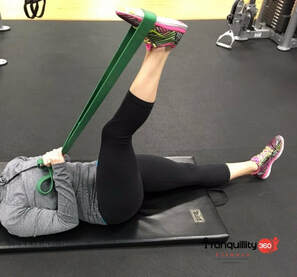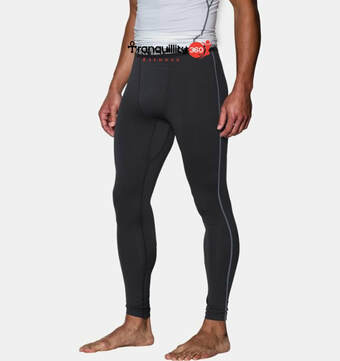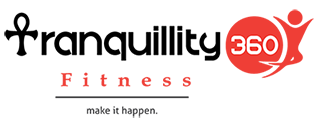 Most people I come across every day when I speak with them regarding fitness, the first thing that comes out their mouth would be aw.. Malachi I don't have time to go the gym but I could do it home and the reasons for not going the gym go on and on. So I thought to myself maybe if I share a blog of basic exercise of how people can burn fat and stay fit from the comfort of their home, in a circuit form, it might motivate some people. In a circuit routine, you’ll do each exercise in succession without a break in between (if you’re able). Once you’ve finished all exercises in the circuit, do it again. If you’re still able after the 2nd run through, go for a third. Because all these exercises come one after another, you’re bound to get tired – and that’s okay! We all start somewhere. It’s better to stop and take a break than to do an exercise incorrectly. If you can’t do all three circuits without stopping, great! That gives you something to work towards. Before you start, don’t forget WARM UP – Never ever ever ever forget to warm up. Make sure to get your heart rate pumping and get your muscles warm or you’re just asking for injury. You can run in place, jump rope, do a few push ups, pedal on a stationary bike, do some punches and kicks, jog up and down your stairs, and/or twist and swing your arms and legs to get them moving! Give it about 5 minutes, and don’t wear yourself out completely, but get your heart rate elevated and little bit of sweat never hurt anybody. After the warm up, here is exactly what you need to do:
After you’ve completed your workout, do some stretches. All your muscles have been contracted from lifting and need to be stretched back out and rebuilt. For either the body weight squats or lunges, if you can’t do them properly yet, it’s okay to put your hand on a support to keep your balance. For the body weight squats, think of it like sitting back into a chair. If you can sit down onto a chair, and then stand immediately right back up without having to lean forward, you are in balance. For the lunges, keep your eyes ahead and your upper body completely vertical. I had a slight bend at times in the video due to trying to exercise and explain at the same time. I used a milk jug for my dumbbell, but you can use whatever is heavy enough for you. Find something that is challenging to lift 10 times in a row. Do this routine 2-3 times a week, but never on consecutive days. You don’t build muscle when you’re exercising, you build muscle when you’re resting. Generally, I like to follow a pattern of strength training on one day, then 20 minutes of interval training on the next, then strength training, then interval training, and so on. Generally, I try not to do a strength training routine (of the same muscle groups) two days in a row, as your muscles need plenty of time to recover. Along with this routine, you need to make sure you’re eating properly! A good workout and crappy diet will not get you anywhere. Lots of real foods (vegetables, protein, healthy fats). Eat natural, whole foods whenever possible, and leave the soda, candy, and junk food out of your system. Your diet is at least 80% of your success or failure. I’m not kidding when I say that. If you don’t develop a healthier relationship with food, no amount of exercise will get you there.
1 Comment
 Getting fit is a lifelong goal for many people. So how do one stick to their fitness goals? To gain and maintain great results, that’s the million-dollar question for everyone, the best way is to set goals, write an exercise schedule (and stick to it.) Check out these seven ways exercise can lead to a happier, healthier you. Tranquillity 360 Fitness Personal Trainer Malachi will break down 7 basic and simple exercise that can get you tone on fit within 4 weeks. 1. Push-ups The push up is a great muscle toning exercise for the arms, chest, triceps and the front of the shoulders.
Squat exercises are great for a total lower body workout. They effectively work most of the major muscle groups of the butt, hips and thighs.
Pick a few of these moves, or try them all to sculpt your legs, tone your thighs and bottom muscles.
This exercise will maintain strong abs and helps to prevent back pain, boost your agility, and increase your flexibility.
Here are quick abs and glute workouts for your best butt and abs ever:
To have that perfect slim waist, you need the right mix of exercise that targets your right core muscles while increasing your metabolism.
Plank helps you to build strength in your core, upper and lower body so its a good full body work out.
Week 1: Do the following for six days:
Week 2: Alternate the following sets for 6 days. Set 1:
Week 4: repeat the Week 2 sets. If you do everything correctly, you will achieve amazing results in just a month and, as a bonus, develop a habit of doing this simple ten-minute set of exercises every day. And if you want to improve your body even more, then doubling the effort is all you need to do! .  Doing exercises to strengthen the lower back can help alleviate and prevent lower back pain. It can also strengthen the core, leg, and arm muscles. According to several researchers, exercise also increases blood flow to the lower back area, which may reduce stiffness and speed up the healing process. Tranquillity 360 Fitness personal trainer Malachi, explain how to do exercises that strengthen the lower back and may help people manage lower back pain: The Bridge Bridges work a person's gluteus maximus, which is the large muscle of the buttocks. People engage this muscle when they move their hips, particularly when they bend into a squat. The gluteus maximus is one of the most important muscles in the body and keeping it strong can help support the lower back. How to perform a bridge:
Doing a knee-to-chest stretch can help elongate the lower back, relieving tension and pain. To perform the knee-to-chest stretch:
Lower back rotational stretches The lower back rotational stretch can help relieve tension in the lower back and trunk. It also gently works the core muscles to improve stability. To perform the lower back rotational stretch:
Pelvic tilts The pelvic tilt exercise can release tight back muscles and keep them flexible. To perform this lower back flexibility exercise:
Lying lateral leg lifts work the hip abductor muscles. These muscles support the pelvis and can help reduce strain on the back. Keeping these muscles strong is essential, as they help a person maintain their balance and can affect mobility. To perform lying lateral leg lifts:
Partial curls Strong abdominal muscles play a significant role in supporting the spine and can also help keep the hips properly aligned. Weak abdominals can result in poor core strength and lack of stability, which can cause lower back pain. Curls and partial curls help build a strong core. To perform partial curls:
Performing exercises to work the core muscles can prevent injury, increase stability, and improve flexibility. People with lower back pain should also pay attention to their general posture and how they carry heavy objects to identify movements that may be responsible.  In the current fitness and exercise world, everyone seems to be focusing so much on what they put into their body. How much of it, what’s in it, and what effect it’s going to have, be it positive or negative, and to be honest I was one of those people until I suffer a splint shin. Then I started to think! Hmm! what about what I put ON my body? Fitness clothing is more important than ever with ever advancing technologies coming in to play, it’s a way we can enhance our performance without any extra effort or training, that will eventually damage the body. This week’s Tranquillity 360 Fitness blog is going to take a closer look at Compression Clothing and what’s its effects. We are going to talk you through what it is and give a rundown of some different pieces of clothing. What is compression clothing? Compression clothing has become somewhat of an umbrella term for items that exist somewhere on a spectrum of super tight and super revealing, often some insane crazy coloured garments. True compression wear does have a purpose and, if the science is to be believed, true benefits. Designed to increase blood and lymphatic flow to the specified limb, compression wear is said to improve performance and shorten recovery time in both athletes and workout warriors when used post exercise. Though they may have started life in the endurance circles of runners and triathletes, athletes such as The Rock and even Wayne Rooney have become synonymous with bulging (though for different reasons) out of compression tops in expertly marketed campaigns for the modern man. The evidence may not be entirely conclusive with regards to the science of how it all works, but studies do exist in which an increase in oxygen uptake to the working muscles, a reduction in blood lactate levels and improved warm ups have all been seen when compression wear is worn post exercise. Compression clothing isn’t just a case of tight fabrics. It is graded in its tightness to ease blood flow, it features wicking properties to reduce sweat pooling and keep the athlete warm, whilst still allowing freedom of movement. The benefits of compression clothing, no matter how circumstantial, are not only flaunted, they are widely accepted by pretty much everyone in the sport. So much so, that even if the science isn’t conclusive with regards to recovery rates, I wear compression wear during all my workouts – both in and out of the gym. Long sleeves and wicking fabrics keep me warm and dry on rainy days and tight tops keep me squeezed in when training in the gym. Simply, I’m sold. Garment Types Socks: Calf length socks have become a standard accessory fitness trend on the race course from 5k’s to ultra-marathons. Post-exercise compression socks have been shown to improve recovery and counteract delayed-onset muscle soreness. They feet and calves have the anatomical disadvantage of being far away from the heart and having to fight the laws of gravity to pump blood away from the area. Therefore, wearing compression socks help improve the circulation without having to lie with your legs in the air! Wearing lower limb garments such as these will keep your legs warm whilst you wait for the starting gun and though they won’t make you faster they have been shown to aid in recovery and help preserve maximal power during endurance training, so you can sprint to the finish like Mo himself. After my shin splint, I was worried to death that, I might not be able to train or run for long time based on reading online theories, its only after discovering compression socks, I was able to feel better and heal at rapid rates, I recover from my shin splint within 8 days. Shorts: Focusing on the upper leg and the glutes, some compression shorts feature padded protection zones around the joints for impact risk sports such as skiing alongside cup holders for martial artists and cricket players. A study in the Journal of Strength and Conditioning Research found that cyclists who wore compression shorts during a 24-hour rest window between two 40km time trials recovered faster and had a far greater power output than those using a placebo. Upper Body: Upper body compression apparel is most commonly worn by footballers and gym goers wishing to keep warm during those early morning sessions. Again, evidence for its use during exercise is mixed but one thing’s for sure, wearing a compression jersey whilst out in the cold winds of blighty will keep you warm, dry and comfortable on the pitch. |
AuthorsThis blog is updated by Tranquillity 360 fitness personal trainers, as well as other guest bloggers. Archives
July 2021
Categories |

 RSS Feed
RSS Feed